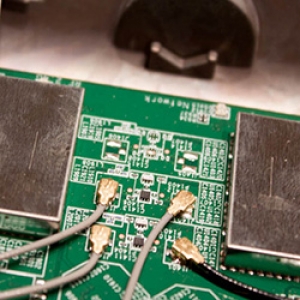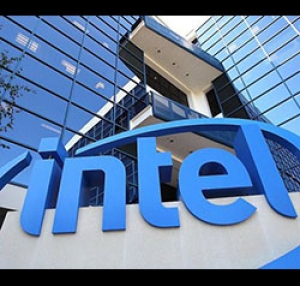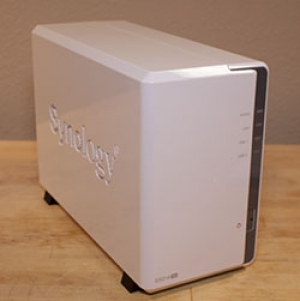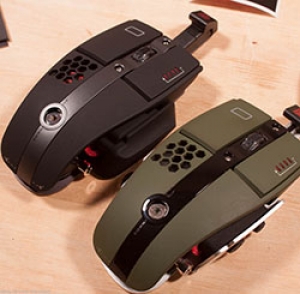From The Blog
-
ConnectWise Slash and Grab Flaw Once Again Shows the Value of Input Validation We talk to Huntress About its Impact
Written by Sean KalinichAlthough the news of the infamous ConnectWise flaw which allowed for the creation of admin accounts is a bit cold, it still is one that…Written on Tuesday, 19 March 2024 12:44 in Security Talk Read 696 times Read more...
-
Social Manipulation as a Service – When the Bots on Twitter get their Check marks
Written by Sean KalinichWhen I started DecryptedTech it was to counter all the crap marketing I saw from component makers. I wanted to prove people with a clean…Written on Monday, 04 March 2024 16:17 in Editorials Read 1575 times Read more...
-
To Release or not to Release a PoC or OST That is the Question
Written by Sean KalinichThere is (and always has been) a debate about the ethics and impact of the release of Proof-of-Concept Exploit for an identified vulnerability and Open-Source…Written on Monday, 26 February 2024 13:05 in Security Talk Read 1109 times Read more...
-
There was an Important Lesson Learned in the LockBit Takedown and it was Not About Threat Groups
Written by Sean KalinichIn what could be called a fantastic move, global law enforcement agencies attacked and took down LockBit’s infrastructure. The day of the event was filled…Written on Thursday, 22 February 2024 12:20 in Security Talk Read 1080 times Read more...
-
NetSPI’s Offensive Security Offering Leverages Subject Matter Experts to Enhance Pen Testing
Written by Sean KalinichBlack Hat 2023 Las Vegas. The term offensive security has always been an interesting one for me. On the surface is brings to mind reaching…Written on Tuesday, 12 September 2023 17:05 in Security Talk Read 2130 times Read more...
-
Black Kite Looks to Offer a Better View of Risk in a Rapidly Changing Threat Landscape
Written by Sean KalinichBlack Hat 2023 – Las Vegas. Risk is an interesting subject and has many different meanings to many different people. For the most part Risk…Written on Tuesday, 12 September 2023 14:56 in Security Talk Read 1851 times Read more...
-
Microsoft Finally Reveals how they Believe a Consumer Signing Key was Stollen
Written by Sean KalinichIn May of 2023 a few sensitive accounts reported to Microsoft that their environments appeared to be compromised. Due to the nature of these accounts,…Written on Thursday, 07 September 2023 14:40 in Security Talk Read 2122 times Read more...
-
Mandiant Releases a Detailed Look at the Campaign Targeting Barracuda Email Security Gateways, I Take a Look at What this all Might Mean
Written by Sean KalinichThe recent attack that leveraged a 0-Day vulnerability to compromise a number of Barracuda Email Security Gateway appliances (physical and virtual, but not cloud) was…Written on Wednesday, 30 August 2023 16:09 in Security Talk Read 2097 times Read more...
-
Threat Groups Return to Targeting Developers in Recent Software Supply Chain Attacks
Written by Sean KalinichThere is a topic of conversation that really needs to be talked about in the open. It is the danger of developer systems (personal and…Written on Wednesday, 30 August 2023 13:29 in Security Talk Read 1890 times Read more...
Recent Comments
- Sean, this is a fantastic review of a beautiful game. I do agree with you… Written by Jacob 2023-05-19 14:17:50 Jedi Survivor – The Quick, Dirty, and Limited Spoilers Review
- Great post. Very interesting read but is the reality we are currently facing. Written by JP 2023-05-03 02:33:53 The Dangers of AI; I Think I Have Seen this Movie Before
- I was wondering if you have tested the microphone audio frequency for the Asus HS-1000W? Written by Maciej 2020-12-18 14:09:33 Asus HS-1000W wireless headset impresses us in the lab
- Thanks for review. I appreciate hearing from a real pro as opposed to the blogger… Written by Keith 2019-06-18 04:22:36 The Red Hydrogen One, Possibly One of the Most “misunderstood” Phones Out
- Have yet to see the real impact but in the consumer segment, ryzen series are… Written by sushant 2018-12-23 10:12:12 AMD’s 11-year journey to relevance gets an epic finish.
Most Read
- Microsoft Fail - Start Button Back in Windows 8.1 But No Start Menu Written on Thursday, 30 May 2013 15:33 in News Be the first to comment! Read 116522 times Read more...
- We take a look at the NETGEAR ProSafe WNDAP360 Dual-Band Wireless Access Point Written on Saturday, 07 April 2012 00:17 in Pro Storage and Networking Be the first to comment! Read 87467 times Read more...
- Synology DS1512+ Five-Bay NAS Performance Review Written on Tuesday, 12 June 2012 20:31 in Pro Storage and Networking Be the first to comment! Read 82025 times Read more...
- Gigabyte G1.Sniper M3 Design And Feature Review Written on Sunday, 19 August 2012 22:35 in Enthusiast Motherboards Be the first to comment! Read 80334 times Read more...
- The Asus P8Z77-M Pro Brings Exceptional Performance and Value to the Lab Written on Monday, 23 April 2012 13:02 in Consumer Motherboards Be the first to comment! Read 70985 times Read more...
Displaying items by tag: Wireless
New Vulnerability Found that Exposes a Large Number Routers to UPnProxy Attack
Universal Plug and Play UPnP) is one of those technology decisions that make you wonder what people were thinking. The concept is fairly clear, find a way to make things easy for someone to just connect a device to a network and have it function without interaction. Devices like the Xbox Series X|S require this for their remote play feature as the ports and IP addresses needed to function would be overly complicated for most users to set up. So, you enable UPnP on your router and just plug the Xbox in. Sound great, but as with anything that create convenience, it also brings about risk.
NETGEAR drops the WAP720 with Ensemble Mode. We take a look
WiFi is one of those services that people simply expect to see these days. When you walk into just about any public building you are going to start looking for the “free” WiFi that they have. Most people do not stop to think about that that looks like behind the scenes especially when you are in a smaller business. In a large business you have multiple wireless access points (WAPs) that are run by a central controller. This centralized control system makes it relatively simple to control both the business side and the guest side of the wireless network. These tools can be very expensive and out of the budget range for most small companies. Instead a small business will end up with either an edge device with built in wireless (and really bad service), a single WAP or multiple individual WAPs that need to be managed independently and have their own problems.
Jabra Sport Pulse Wireless Headset Review
One area that is booming in the consumer electronic field is health and fitness wearables. For the last year or so we have watched multiple new products hit the market as this particular vertical tries to find an identity. One of the items that we have been able to take a deeper look at in the lab is the Jabra Sport Pulse Bluetooth headphones. These are interesting because in addition to being headphones they can also take your pulse and track progress through different workouts. Let’s take a look and see if these stand out from the crowd or if they are just another device in the sea of also rans.
Samsung Claims to Have Created 4.6Gbps 60GHz Wireless
One of the biggest issues with wireless is that you never really get the speeds you are promised. Right now the maximum theoretical speed you can get in consumer wireless is about 1.3Gbps. This is assuming you are running the right router and wireless adapter which means that both have to support three antenna as well as the full 802.11ac spec. To be perfectly honest with you that is not likely to happen in the real world as most wireless adapters do not support AC1300 (full 1.3Gbps). Instead you end up getting AC800-900 with the rare AC1200 popping up now and then. Even if you have both ends at AC1300 you are still not likely to see the nirvana of 1.3Gbps wireless.
NETGEAR WC7600 Wireless Controller and WN370 Access Point Review
For the majority of people the term wireless means a simple router or access point (AP) and that is that. However, when you look at wireless on a larger scale you have to have a means to control access points in your organization with a little more efficiency. The thought of going from AP to AP and manually making changes to ensure proper coverage or channel plans is one that would keep most network engineers up at night. However systems that offer a centralized management point for multiple Aps are typically out of the range of small and even medium sized businesses. NETGEAR has stepped in and created a few products to cover this market. We have their WC7600 Wireless controller and a pair of WN370 Access Points in the lab, so let’s check this bundle out and see how it fits in.
Intel is looking to cut the cords...
Intel has been working on making the “PC” a standalone unit for a very long time. The started the process by developing he standard to put the audio card on the motherboard and have been pushing to include more and more info either the CPU itself or mount it on the motherboard. This has not been a surprising move simply because the world keeps looking to smaller and smaller devices to perform its computing. However, Intel wants to take things one step further by getting rid of all of the cables that are needed to run a PC.
Synology DS214SE 2200 Design and Feature Review
The need for a place to put your digital stuff is always going to be. There really is just no getting around it. The question is, do you want to trust your files to the cloud, or do you want to keep them in your possession? For some the cloud looks like an attractive alternative. It is inexpensive and you can access you information from anywhere you have an internet connection. At least the cloud used to be an attractive alternative until the news about how poor security is at many of these places along with the news that when you put your files online you lose some of your ownership rights. So what do you do when a bigger or external drive will do the trick? Well simply put a Network Attached Storage device is perfect for this. Almost all of them come with multiple drives in some form of RAID to protect your data and, in many cases, can be accessed from anywhere you have an internet connection. Today we are taking a look at a NAS from Synology that is aimed straight at the home. This is the two bay DS214SE 2200. So let’s dive in and see if Synology can do for the home what they have done for small to medium businesses.
Thermaltake tt eSports Level 10M Hybrid Gaming Mouse Review
There is no doubt that gaming is a huge part of the PC market. This one “segment” has so many verticals inside of it that it can be difficult to keep track of. You have GPUs, Keyboards, Mouse, Headphones, Speakers, Monitors, and of course the actual games that this stuff is designed for. Inside these smaller verticals you can find a wide range of products from the truly inspired to the “what were they thinking” groups. Today we are taking a look at a product that, at first glance, belongs in the inspired group. This is the Thermaltake Level 10M Hybrid gaming mouse. It is the sibling of the original Level 10M and has a lot to prove if it is to follow in the footsteps of that mouse. So let’s get started and she just how well it does.
Asus RT-N66U Dark Knight 802.11n Wireless Router Review
Home networking gear has been making some leaps in speed and sophistication since its introduction. These leaps have made wireless in the home more usable and configurable. Much of the work on this side of the product (making things easier to configure and use) has been behind the scenes, but this work has pushed wireless technology further into our homes. Now the big ticket item is the new 802.11ac wireless standard. However there is still a huge market for 802.11n wireless products with dual concurrent bands (2.4GHz and 5GHz). Right now these wireless products are what you are going to see in the market and what consumers are interested in simply because of their prevalence. So with that in mind we are taking about an 802.11n wireless router from Asus, the RT-N66U Dark Knight Wireless router.
Ericsson miniature antennas for mobile signal improvement
 |
Ericsson has introduced a miniature antenna modules for mobile networks, which should ensure the presence of the signal of mobile networks and improved capacity on up to now poorly covered areas within the building.






